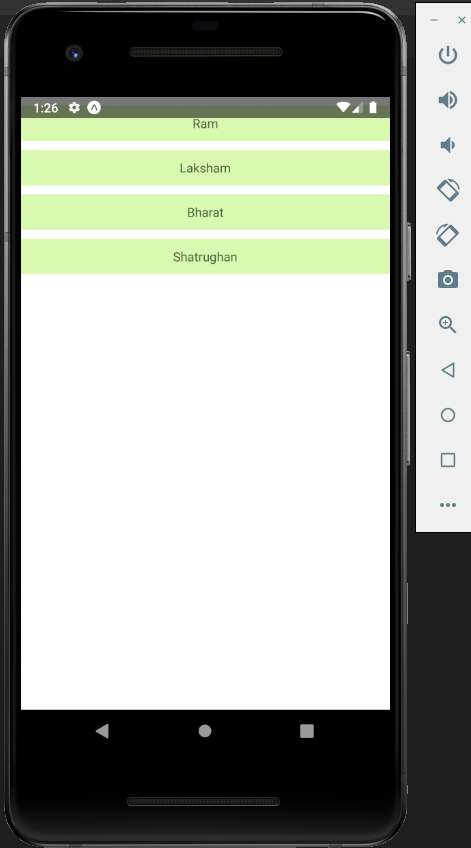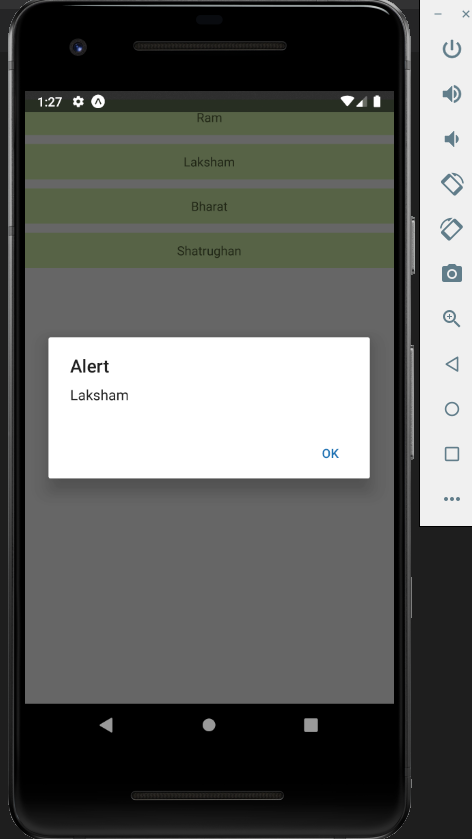
In this chapter, we will show you how to create a list in React Native.
A core component designed for efficient display of vertically scrolling lists of changing data. The minimal API is to create a ListView.DataSource, populate it with a flat array of data blobs, and instantiate a ListView component with that data source and a renderRow callback which takes a blob from the data array and returns a renderable component.
The ListView component has deprecated. To implement the list component use new list components FlatList or SectionList.
import React, { Component } from 'react'
import { Text, View, TouchableOpacity, StyleSheet } from 'react-native'
class List extends Component {
state = {
names: [
{
id: 0,
name: 'Ram',
},
{
id: 1,
name: 'Laksham',
},
{
id: 2,
name: 'Bharat',
},
{
id: 3,
name: 'Shatrughan',
}
]
}
alertItemName = (item) => {
alert(item.name)
}
render() {
return (
<View>
{
this.state.names.map((item, index) => (
<TouchableOpacity
key = {item.id}
style = {styles.container}
onPress = {() => this.alertItemName(item)}>
<Text style = {styles.text}>
{item.name}
</Text>
</TouchableOpacity>
))
}
</View>
)
}
}
export default List
const styles = StyleSheet.create ({
container: {
padding: 10,
marginTop: 3,
backgroundColor: '#d9f9b1',
alignItems: 'center',
},
text: {
color: '#4f603c'
}
})

In the above code, we create an instance of ListViewDataSource in the constructor. The ListViewDataSource is a parameter and accept an argument which contain any of these four:
- getRowData(dataBlob, sectionID, rowID)
- getSectionHeaderData(dataBlob, sectionID)
- rowHasChanged(previousRowData, nextRowData)
- sectionHeaderHasChanged(previousSectionData, nextSectionData)
ListView also supports more advanced features, including sections with sticky section headers, header and footer support, callbacks on reaching the end of the available data (onEndReached) and on the set of rows that are visible in the device viewport change (onChangeVisibleRows), and several performance optimizations.
There are a few performance operations designed to make ListView scroll smoothly while dynamically loading potentially very large (or conceptually infinite) data sets:
- Only re-render changed rows – the rowHasChanged function provided to the data source tells the ListView if it needs to re-render a row because the source data has changed – see ListViewDataSource for more details.
- Rate-limited row rendering – By default, only one row is rendered per event-loop (customizable with the
pageSizeprop). This breaks up the work into smaller chunks to reduce the chance of dropping frames while rendering rows.





